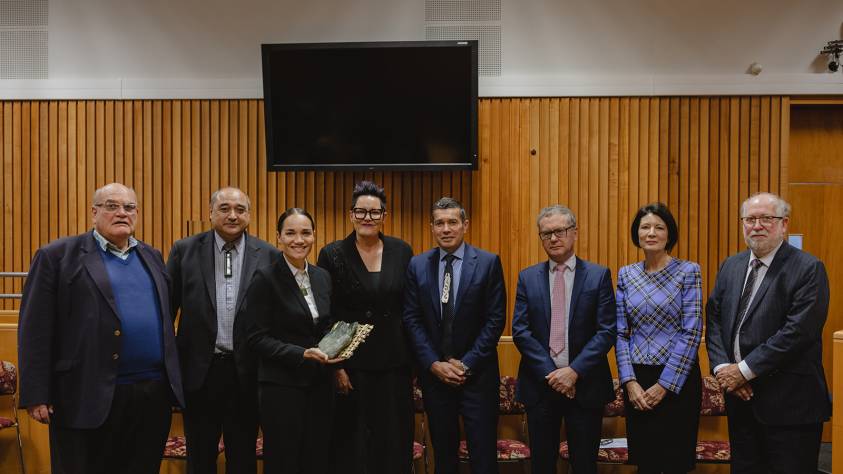Gisborne District Court to implement Te Ao Mārama model


A special event held earlier this week in Gisborne marked the announcement that the Gisborne District Court will be the next one to implement the Te Ao Mārama model.
Chief District Court Judge Heemi Taumaunu, Principal Family Court Judge Jacquelyn Moran and the Principal Youth Court Judge John Walker announced Gisborne would follow Hamilton in adopting the model, which is a response to calls for transformative change to the justice system to better reflect the needs of a modern-day Aotearoa New Zealand.
In his announcement this week, the Chief District Court Judge said while Hamilton is a more metropolitan area, Gisborne provides an opportunity for a smaller, more regional court to adopt the Te Ao Mārama approach.
“The Gisborne District Court is well supported by its local community, with services and agencies willing and available to help ensure that the underlying needs of those affected by the business of the court can be addressed.”
New Zealand Law Society | Te Kāhui Ture o Aotearoa President, Tiana Epati says she is thrilled the District Court Kaihautū (leadership) chose Gisborne as the first regional court to adopt the new model.
“When Chief Judge Taumaunu called a hui weeks ago, to gauge whether local lawyers had an appetite to develop the Te Ao Mārama model, there was a resounding response,” Ms Epati says.
“The short notice hui was packed with lawyers from both prosecution and defence, along with community leaders and justice professionals – illustrating the passion and energy to do things differently.”
Based in Gisborne, Ms Epati says she is proud of the journey the local legal profession, and community, have embarked on to make our justice system better for Aotearoa, New Zealand.
“It means a more enlightened delivery of justice in modern-day Aotearoa with a focus on restoration and rehabilitation by bringing the wisdom and understanding of local iwi, hāpu and the community into the court,” she says.
Te Ao Mārama is inspired by the concept “mai te pō ki te ao mārama” meaning “the transition from night to the enlightened world”. Implemented with support from the Ministry of Justice, it will use a solution focused judging approach in mainstream courts and will draw on best practice used in the District Court’s specialist courts.
The concept builds on previous models of justice delivery, including initiatives such as the Rangatahi Courts and Te Pae Oranga (Iwi Community Panels), which started in Gisborne. It also takes on some best practice learnings from other specialist courts, such as increasing community involvement and voice, infusing tikanga Māori, and using plain language and toning down formalities in court.
The Chief District Court Judge explained that the success of the model relies on a spirit of partnership: “developed with local iwi through engagement with local communities, representatives of the justice sector and legal profession, both nationally and locally to create a process that works for each court and the needs of each community.”
Ms Epati agrees, acknowledging the cultural shift presented by the model.
“Undoubtedly, the success of Te Ao Mārama will depend on all of us coming together. It will depend on our community being actively heard and involved. It will rely on iwi and hapū actively engaging and having confidence in this new way forward. It will also rely significantly on the local legal profession.”